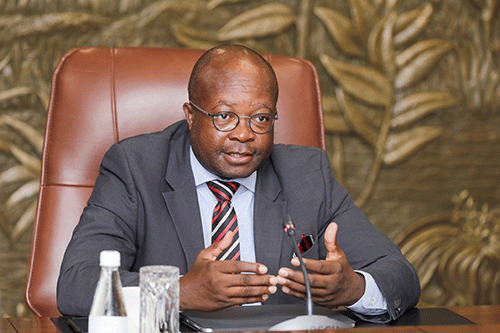With a two-year extension to allow for completion, Namibia’s fifth National Development Plan 5, which was created to help realise Vision 2030, only met 58% of its stated goals.
Key findings under the economic progression pillar in an NDP5 progress analysis report, seen by this paper, indicate that upgraded road networks and water infrastructure, particularly in rural areas, performed well.
“Other strides made are the increase in access to information communication and technology (ICT) services and infrastructure, increase in the local energy generation capacity and national electrification rate – and finally, the improved share value added in crop farming,” the report detailed.
However, poor performance under the aforementioned pillar was evident in the declining gross domestic product (GDP), persistent high unemployment and increasing poverty rate.
Since 2016, Namibia experienced a deterioration in macroeconomic fundamentals and economic growth as investment plummeted, public debt rose to unprecedented levels and inflation rates rose eroding the purchasing power of households’ income.
These factors put more pressure on already high levels of unemployment and exposed the local economy’s vulnerabilities to external
shocks.
Moreover, additional challenges stated in the NDP5 analysis report include the global economic downturn and limited value addition to mining, agricultural and fishing sectors.
The report proposes that Namibia strengthens financial access through the integrated national financing framework, while developing strategies to encourage value addition to natural resources.
Social transformation
In terms of the NDP5 progress, the report noted an improved performance in education at primary, secondary as well as technical and vocational education and training (TVET). An increase in social safety nets was seen as a good performance with an increase in health professionals.
However, the pillar failed to deliver on the housing sector’s needs, including poor sanitation.
Therefore, Namibia currently sits with a backlog of 300 000 houses and needs more than 30 000 housing units annually to adequately fight the housing backlog.
Speaking at the end-of-the-year press briefing earlier this week, where ministers were provided updates on individual targets, agriculture minister Calle Schlettwein lamented the lagging sanitation situation.
“We only provide safe sanitation to just about a little more than half of the population. Sanitation is not only a technical problem, but it brings dignity to the lifestyle. It prevents health problems and is needed to attract development. No one will develop an area where sanitation is not available,” Schlettwein pointed out.
One of the recommendations in the NDP5 analysis is to improve access to affordable housing finance, including low-interest loans, mortgage schemes and innovative financing models.
Environmental sustainability
The main challenge under this pillar is the increase in poaching cases of highly sought and valued wild animals, such as rhinos, elephants and pangolins.
In Namibia, poaching of endangered rhinos hit a record high last year, with 87 rhinos slaughtered as compared to 45 in 2021. Thus, there is a need to urgently strengthen enforcement and antipoaching efforts, focusing on elephants and
rhinos.
Good governance
The analysis further mentioned slow progress on the decentralisation process and high crime prevalence rate. Recommendations for these challenges are: Namibia needs to expedite the decentralisation process, conduct more awareness creation activities, especially on corruption and strengthen strategies to combat crime.
Namibia launched the Sixth National Development Plan (NDP6) in June this year, which is to be developed and cover the 2024/25 to 2030/31 financial years.
National Planning Commission director general Obeth Kandjoze said Namibia adopted planning to direct the course of national development. Through the national development plans, the country sets its vision, goals and objectives, and devises strategies to actualise the national development process.
Additionally, national development plans, he said, are means to mobilise Namibia’s factors of production, namely, human capital, land and entrepreneurship, to produce goods and services for the betterment of Namibians.
To overcome rampant poverty in Namibia, the World Bank last year in its overview advised Namibia to implement crucial structural policy reforms that it said would be a prerequisite to raising domestic growth potential.
This was after the World Bank’s overview indicated that some 1.6 million Namibians live in poverty.
According to the World Bank, these structural reforms are essential measures that ultimately change the fabric of an economy, including the institutional and regulatory framework in which businesses and people operate.
This advice from the international financial institution was offered after an analysis of the effects of Covid-19 on the domestic economy that revealed a shocking impact.
The World Bank provides loans and grants to governments of low- and middle-income countries for the purpose of pursuing capital projects and, thus, reducing global poverty.
“With an increase of 200 000 in 2020, the number of poor people measured by the upper middle-income poverty line (US$5.5/person/day in 2011 Purchasing Power Parity terms) has reached a record-high of 1.6 million. The pandemic mostly affected already-vulnerable people, which threatens to widen social gaps further and increase already extremely high inequality,” reads the report. - mndjavera@nepc.com.na


